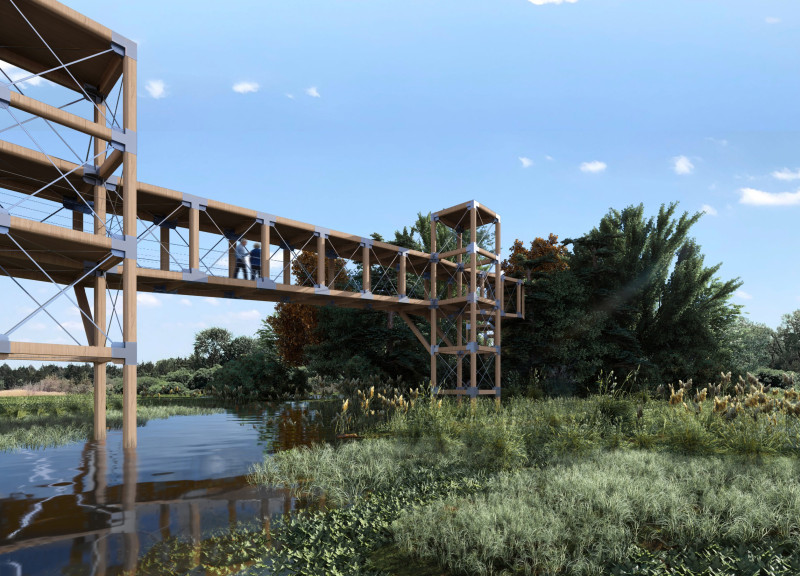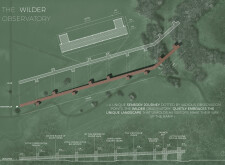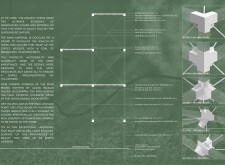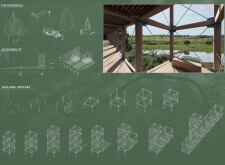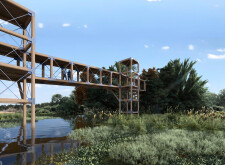5 key facts about this project
## Overview
Located along the banks of Plum Creek, the Wilder Observatory integrates architectural design with the natural landscape, facilitating an immersive sensory experience for visitors. The intent of the observatory is to engage individuals with the surrounding environment while highlighting the importance of biodiversity through accessible pathways tailored for education and exploration. The design seeks to complement the ecological narrative of the area, encouraging stewardship and awareness.
## Spatial Engagement and Accessibility
The architectural framework includes nine observation towers, each inspired by the literary works of Laura Ingalls Wilder, enriching the local cultural context. These towers offer varied vantage points, allowing visitors to connect with the landscape. A main ramp serves as the primary pathway, ensuring universal access to all observation points. This ergonomic design prioritizes inclusivity, allowing individuals of varying mobility to engage with the site comfortably.
### Materiality and Construction
The observatory utilizes Douglas Fir as its primary material, reflecting a commitment to sustainability and local resource utilization. This choice not only enhances regional identity but also supports biodiversity conservation efforts. The construction incorporates traditional wooden methods alongside modern engineering techniques. Key structural elements include flat steel cross bracing for stability, steel anchor studs for secure assembly, and galvanized steel screws to ensure durability. Through these material choices and construction methods, the observatory aims to promote resilience while maintaining harmony with its natural surroundings.


